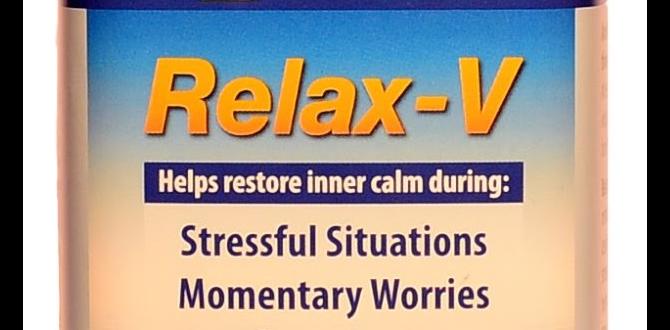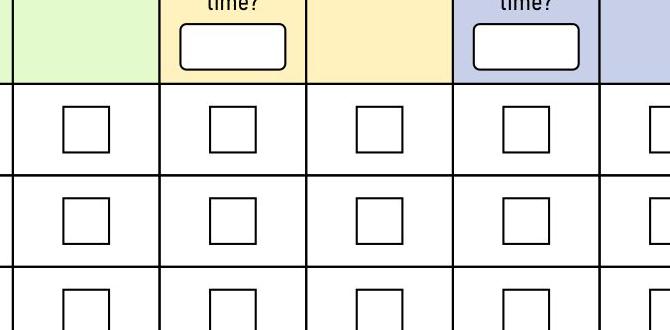Navigating the intricacies of air travel regulations becomes even more complex when flying with medication, a necessity for countless passengers. The protocols surrounding the transportation of pharmaceuticals in both carry-on and checked luggage are governed by a myriad of policies that differ from one jurisdiction to the next, making it imperative for travelers to be well-informed. Understanding these guidelines is crucial not only for compliance but also to ensure one’s health and well-being throughout the journey.
This article will explore the essential information and tips you need to know about flying with medication, unveiling the labyrinth of rules that could otherwise cloud your travel plans. Whether it’s prescription drugs or over-the-counter medications, prepare to embark on a journey that promises to make your next flight smoother and more stress-free.
Essential Tips For Flying With Medication

understanding airline regulations and policies on medications
– overview of tsa and faa rules on flying with medications – international regulations: a look at iata guidelines and country-specific rules
When you pack your bags for a trip, knowing how to fly with your medications is key. Airlines and countries have different rules that you should understand before you head to the airport. The Transportation Security Administration (TSA) and the Federal Aviation Administration (FAA) provide guidelines for air travel in the U. S.
They allow passengers to carry prescription medicines in carry-on bags, but they must be screened separately. For international flights, the International Air Transport Association (IATA) and each country might have their own specific guidelines.
- Always carry your prescription: This proves your medication is for personal use.
- Check liquid restrictions: Some medications in liquid form may need special permission or have limits on the amount you can bring in your carry-on.
- Research destination rules: Countries have their own laws about which medications are allowed, so look this up before your trip.
By understanding these regulations, you can ensure your travel plans go smoothly without any medication mishaps.
packing medications for air travel: best practices
– tips on packaging and organizing medications for security checks – the importance of keeping medications in original containersPacking your medications for a flight requires a bit of planning. Keeping them in their original containers is key. This not only helps with identification during security checks but also ensures you have all the necessary information in case you need a refill.
Here are tips to make the process smoother:
- Keep all medications together: Use a small, clear, resealable bag to keep your medications in one place. This makes it easier to present them at security checks.
- Original containers are a must: Always pack your medications in their original containers. Security personnel can easily identify them, reducing the risk of delays.
- Carry a copy of your prescription: Having a copy of your prescription can be helpful, especially if you need to prove the medication is prescribed to you.
carrying prescription medications: documentation you need
– identifying necessary documentation and letters from healthcare providers – navigating airport security with prescription drugs: a step-by-step guide
Traveling by air can turn into a puzzle, especially when you need to bring your medications. Think of it like a superhero journey, where your meds are your sidekicks, and your mission is to get them safely through the mighty fortress of airport security. First, gather your team of documents: a letter from your healthcare provider detailing your need for the medication, and the original prescription label. Yes, it’s like getting a backstage pass for your meds!
These documents are your golden tickets through the security gates.
Now, for the step-by-step guide to navigating airport security with your prescription drugs. Imagine you’re going through a super-secret agent training course:
| Step | Action |
|---|---|
| Keep medications in original containers. | |
| Show your doctor’s letter and prescription label when asked. | |
| Declare medications to security officers upfront, like unveiling a secret weapon. | |
| Be ready for possible additional screening – it’s your moment in the spotlight! |
Remember, this mission may seem daunting, but with the right documentation and a bit of humor about the entire process, you’ll navigate it like a pro. Just picture yourself as the main character in an adventure movie, where the prize is a hassle-free flight with your medications safely by your side.
traveling with over-the-counter medications
– guidelines for carrying over-the-counter medications on planes – how to store and access non-prescription drugs during your flight
Ever faced the dilemma of needing a headache pill mid-flight but found it buried deep in your luggage? Here’s a chuckle-worthy yet wise tip: pack your over-the-counter medicines like they’re your snacks – easy to reach and ready to eat. . .
er, use. When flying, keep these medicines in their original packaging to avoid the “mystery mix-up” of an antacid looking like a mint. Wondering how to seamlessly carry and access your non-prescription drugs during your high-altitude adventures?
Check out the guide below, and remember, keeping medicine handy doesn’t mean stuffing them in your neighbor’s seat pocket!
| Medication | Storage Tip | Access Tip |
|---|---|---|
| Headache pills | Keep in original bottle | Place in personal item, like a purse |
| Allergy medicine | Original packaging | Keep in jacket pocket |
| Antacids | Sealed and labeled | Carry in carry-on bag |
Following these simple guidelines ensures your flight is as smooth as your access to relief. No one wants to rummage through their bag for a rogue pill while the fasten-seatbelt sign is on.
By planning ahead, you can focus on more important things, like whether to watch a movie or take a snooze. Happy and prepared travels!
flying with liquid medications: what you must know
– exceptions to the tsa liquids rule for medications – packing and presenting liquid medications at airport securityWhen you’re flying, the rules for liquids can be strict, but did you know there are special allowances for liquid medications? Yes, your essential medicines can accompany you, even beyond the usual 4-ounce limit.
However, to make your journey smoother, there are key points you should remember:
- Pack smartly: Keep liquid medications in their original containers with labels. This helps security officers quickly identify them.
- Declare at security: Before going through the security checkpoint, tell the officer you have liquid medications. They may need to inspect these separately.
- Documentation helps: Having a doctor’s note or prescription label with your name makes the process easier, showing the medication is necessary for your health.
By understanding these exceptions and preparing properly, flying with liquid medications becomes less of a hassle and ensures you stay healthy during your travels.
managing medication schedules across time zones
– strategies for adjusting medication schedules during long-haul flights – tools and apps to help track medication timings in different time zones
Traveling across the world can mess up your medication routine. Time differences mean you need a smart plan to keep your health in check. Here’s how you can manage:
- Plan Ahead: Before your flight, calculate the time differences.
Adjust your medication schedule a few days early if possible. This helps your body adapt smoothly.
- Use Technology: Apps like Medisafe or MyTherapy send reminders based on your current time zone. They keep track of your doses, so you don’t miss any.
- Carry a Medication Schedule: Write down your schedule and keep it with you. This acts as a quick reference, especially if your phone runs out of charge.
- Consult Your Doctor: Get advice on adjusting your medication schedule.
They might suggest timing strategies that suit you best.
Following these steps ensures your medication routine doesn’t trip over time zones. Stay healthy and enjoy your journey!
accessibility and storage of medications during flights
– tips for ensuring easy access to medications in carry-on luggage – temperature-sensitive medications: how to store them on the planeTraveling by air requires careful planning, especially when you need to take medication with you. Here are some helpful tips to ensure your medications are easily accessible and stored correctly during your flight:
- Carry-on Is Key: Always keep your medications in your carry-on luggage to ensure you have access to them throughout the flight. This prevents any issues if your checked luggage is delayed or lost.
- Use Original Containers: To avoid security delays, keep medications in their original, labeled containers. This makes it easier for security personnel to identify them.
- Notify Security: Inform a security officer about any liquid medications or special equipment like coolers for temperature-sensitive medications. They can provide guidance on proper screening procedures.
- Think Temperature: For medications sensitive to temperature, use insulated travel bags with ice packs. However, confirm with the airline about their policy on ice packs and cooling devices onboard.
By following these tips, you can ensure your medications remain safe and accessible, allowing you to have a worry-free flight.
dealing with lost or damaged medication while traveling
– steps to take if your medication is lost or damaged during your journey – how to find pharmacies and get prescriptions filled in foreign destinations
Ever found yourself in the sticky situation where your medication decides to go on a separate vacation, lost or damaged? No need to panic! First, always have a copy of your prescription handy. This is like having a map when you’re lost.
If you’re in a foreign country, head to a local pharmacy – they’re almost everywhere, like coffee shops. Show them your prescription, and voilà, they might just save the day. However, not all superheroes wear capes, so finding English-speaking staff can be like finding a needle in a haystack.
Here’s a little trick: use a translation app to communicate. It’s like having a bilingual friend in your pocket.
If your meds are as important as the air we breathe, consider splitting them into different bags next time.
This way, if one bag decides to take a detour, you’re not left in a lurch. Now, imagine pharmacies as treasure troves scattered around town. Finding one that stocks your medication can be an adventure.
Keep calm and carry on; with the right attitude, you’ll navigate this quest like a pro.
For those who weave tales of adventure in new lands but dread the thought of their precious cargo—medication, that is—playing hide and seek, here’s a golden tip: reach out to your embassy. They can be your knight in shining armor, guiding you to the nearest pharmacy fortress.
And remember, in the vast desert of confusion, your prescription is your oasis.
travel insurance and medications: what’s covered?
– understanding travel insurance coverage for lost, stolen, or forgotten medications – the importance of declaring pre-existing conditions and medications when purchasing travel insurance
Before you fly, understanding your travel insurance policy is key, especially about medication. If your medication is lost, stolen, or if you’ve left it behind, your travel insurance might cover it. However, it’s crucial to know that not all policies are the same.
Some require you to declare any pre-existing conditions and the medication you take for these conditions when you buy the insurance. This can affect what’s covered. Keep these points in mind:
- Always check if your policy covers lost or stolen medication and under what conditions.
- Declare all your pre-existing conditions and medications; failing to do so might invalidate your coverage.
- Keep a list of your medications and their prescription details handy, in case you need to claim.
With the right preparation, you can fly stress-free, knowing you’re covered.
Conclusion
In conclusion, flying with medication requires careful planning and adherence to airline and TSA guidelines. By ensuring you have the necessary documentation, packing medication properly, and staying informed about regulations, you can travel with peace of mind. Remember, the key is to prioritize your health and safety while navigating air travel, making your journey as smooth and stress-free as possible.
FAQs
What Are The Tsa Guidelines For Traveling With Prescription Medication On Domestic Flights In The United States?When traveling on domestic flights within the United States, the Transportation Security Administration (TSA) allows passengers to carry prescription medication in both carry-on and checked luggage. Medications in pill or solid form are permitted in unlimited quantities as long as they are screened, while liquid medications in amounts larger than 3.4 ounces (100 milliliters) also need to be screened and declared to the TSA officers at the checkpoint. It’s recommended, but not required, for medications to be in their original labeling to facilitate the screening process. Additionally, passengers should declare accessories associated with their medications, such as ice packs, IV bags, or pumps, to security officers during the screening process.
How Should Medications Be Packed In Both Carry-On And Checked Luggage When Flying Internationally?When flying internationally, medications should be packed in their original containers with clear labels in both carry-on and checked luggage. Carry-on luggage is preferable for essential medications to ensure accessibility and prevent loss due to luggage mishandling. It’s advised to carry a copy of the prescription or a letter from a healthcare provider, particularly for controlled substances or injectable medication. Additionally, checking the regulations of the destination country regarding medication entry is crucial to avoid any legal issues.
Are There Specific Restrictions Or Regulations Travelers Should Be Aware Of When Carrying Liquid Medications On A Plane?Yes, travelers should be aware of specific restrictions when carrying liquid medications on airplanes. Generally, liquid medications are exempt from the 3-1-1 liquids rule, allowing passengers to bring quantities larger than 3.4 ounces (100 milliliters) in their carry-on bags. However, passengers must declare these items to security officers at checkpoints for inspection. It’s recommended to also carry a doctor’s prescription or a medical statement to facilitate the screening process.
What Documentation Should A Traveler Carry When Flying With Medications That Are Considered Controlled Substances?When flying with medications that are considered controlled substances, travelers should carry a valid, original prescription or a letter from their healthcare provider detailing the medical necessity of the drug, the prescribed dosage, and the traveler’s name. It’s also crucial to keep medications in their original labeled containers, showing the prescription information. Additionally, having a copy of the prescription and any relevant medical documentation can be helpful, especially for international travel where regulations can vary. Always check with the airline and the destination’s customs and import rules regarding controlled substances to ensure compliance and avoid legal issues.
How Does One Handle Refrigerated Medications While Traveling On Long-Haul Flights?To handle refrigerated medications while traveling on long-haul flights, one should first consult with the airline regarding its policy on carrying and storing medications. It’s advisable to carry the medication in a portable cooler or insulated medicine bag with gel ice packs to maintain the necessary temperature. Keep medications in their original packaging with clear labels and a doctor’s prescription letter to facilitate security checks. Finally, inform airport security about the medication during the screening process to ensure smooth handling and compliance with regulations.
